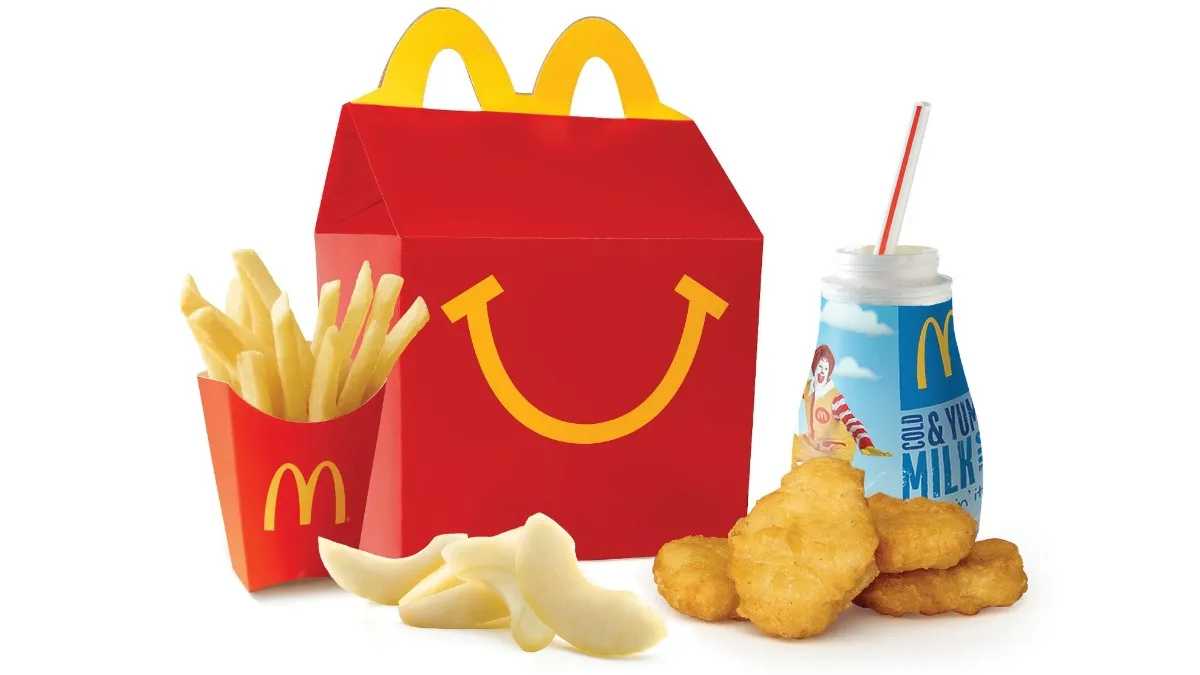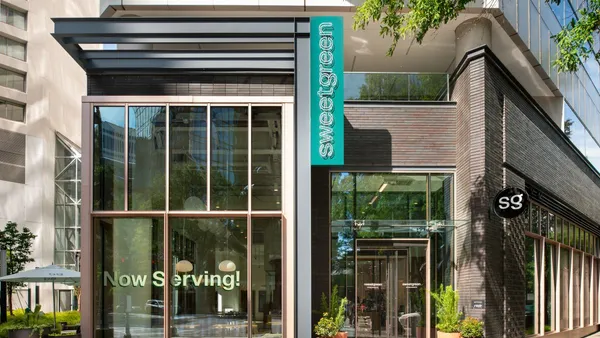Dive Brief:
- McDonald's has met all five of its 2013 commitments that it developed with the Alliance for a Healthier Generation to promote fruit, vegetable, low-fat dairy and water two years ahead of schedule in a majority of its 20 major markets, including the U.S., according to an independent report from Keybridge. The remaining markets will meet the current 2020 deadline.
- So far, McDonald's USA increased the number of Happy Meals served with milk, water or juice by 15% from September 2013 and September 2018. More than half of Happy Meals now have these choices for beverages.
- The chain also served over 3.4 billion fruit, low-fat and dairy and water items in U.S. Happy Meals since 2013 and more than 250 million sides of apple slices were served last year.
Dive Insight:
Providing healthier options for kids will be important for QSRs to keep attracting parents with kids, especially millennial families. This key demographic has increased visits to restaurants by 5% last year and tend to eat out at foodservice establishments 30% of the time, seeking options for QSR and fast casual chains for dinner.
McDonald's made several revisions to its Happy Meal options in June that it projects will result in an average calorie reduction of 20%. These changes included removing the cheeseburger unless requested by the customer and replacing a small fry option with a kid-sized option, cutting calories and sodium from fries in half, according to a press release.
Restaurants in general have been offering healthier options with meal bundles, and healthy options increased from zero in 2011 to about 20% by 2015, according to a UCLA Fielding School of Public Health report. From 2004 to 2015, meal bundles with at least one fruit and non-fried vegetables increased 58%. Several fast food chains have recently rolled out healthier kids meals, including KFC, Burger King, Wendy's, Subway and Dairy Queen.
However, only one-third of the 20 chains analyzed by UCLA offered healthier options by default in 2015. More kids are eating fast food as well, according to a survey of 800 parents from Rudd Center for Food Policy and Obesity at the University of Connecticut. That study found that 91% of parents purchased lunch or dinner from a McDonald's, Burger King, Wendy's or Subway in 2016, compared to 79% in 2010. It also concluded that kids were eating less healthy options because parents weren’t given the option to swap in a healthier side.
Making sure that employees offer healthier sides also will continue to be important to attract parents with kids, especially since fast food has become saltier and more caloric within the last 30 years. Offering healthier options could give fast food chains a leg up, especially with millennials increasingly seeking out more nutritional food.












